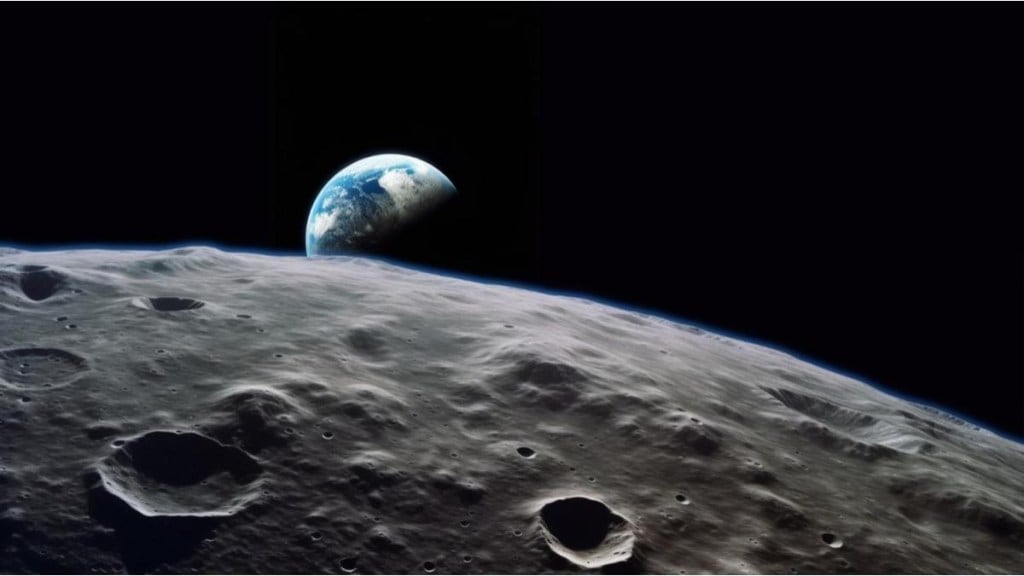The Moon, our celestial outpost in this space endeavour, represents the crucial inaugural step as we reach out to explore the vast universe beyond. Recently, India’s Chandrayaan-3 mission completed over a week’s stay on the lunar surface after it landed in the south polar region on August 23.
The mission, led by the Indian Space Research Organisation (ISRO), made India the fourth country to achieve a soft lunar landing and the first to reach the Moon’s south pole. Amid such joyous achievements in space exploration, a constant and unwavering supply of electricity throughout lunar days and vital heating during the frigid lunar nights stands as the lifeblood of sustained space activities.
Among the myriad challenges encountered by space agencies around the world in lunar exploration, perhaps the most daunting is the survival of crews and lunar assets through the unforgiving lunar night. Scientists have long been working on projects that can help them in extended Moon stays for deeper and elaborate studies.
Let’s take a look at several methods which helps or may help in the future in generating electricity on the lunar surface:
Solar Power
One of the most reliable and widely used methods for generating electricity on the Moon is harnessing solar power. The Moon’s proximity to the Sun allows it to receive a steady supply of sunlight for approximately 14 Earth days during its lunar day. Solar panels are strategically placed on the lunar surface, rover decks, or habitat modules to capture this abundant energy.
Efficiency is paramount when it comes to lunar solar panels. High-efficiency solar panels maximise energy capture, ensuring consistent power generation throughout the lunar day. However, lunar regolith and dust can accumulate on these panels, reducing their efficiency. Scientists and engineers have developed innovative cleaning mechanisms and protective coatings to mitigate this issue.
In-Situ Resource Utilization (ISRU)
In-Situ Resource Utilization is a pivotal strategy for lunar power generation, reducing the reliance on materials from Earth. NASA used this strategy in their Artemis program. ISRU involves utilising local lunar resources for various purposes:
Solar Panel Materials: Lunar regolith (essentially, lunar soil) can be processed to extract materials needed to manufacture solar panels, reducing the need to transport these materials from Earth.
Oxygen and Hydrogen Production: Lunar regolith can be processed to extract oxygen and hydrogen, which can serve as fuel in regenerative fuel cells and other power generation systems.
Thermoelectric Generators
Ongoing research and development continue to expand the possibilities for lunar power generation. As Chandrayaan-3 recorded major temperature variations on the lunar surface and about 10 cm beneath, the following method piques our interest the most. Thermoelectric generators can capture temperature differences on the Moon to generate electricity efficiently.
The operation of TEGs is rooted in the Seebeck effect, a phenomenon in which a voltage is generated when a temperature gradient is established across certain materials.
How do TEGs work?
- The Moon experiences extreme temperature fluctuations due to its lack of atmosphere. During the lunar day, temperatures can soar, while at night, they plummet. TEGs can be strategically positioned to exploit these temperature differentials
- Within the TEG, semiconductor materials are used that possess unique thermoelectric properties. These materials enable the efficient conversion of heat into electricity. When one side of the TEG is exposed to the lunar surface’s elevated temperature, and the other side radiates heat into the frigid lunar night, a thermal gradient is established
- This temperature gradient initiates the movement of charge carriers within the semiconductor material. As these charge carriers migrate from the hot side to the cold side of the TEG, an electric current is generated, creating a flow of electricity
Nuclear Power
Nuclear power sources offer a constant supply of electricity on the Moon, unaffected by day-night cycles. Two primary forms of nuclear power generation are considered for lunar missions are Radioisotope Thermoelectric Generators (RTGs) and fission reactors.
RTGs utilise the heat generated by the natural radioactive decay of isotopes, such as plutonium-238, to produce electricity, space agency NASA stated. Fission reactors, while more complex and requiring stringent safety measures, can provide higher power levels and serve as long-term energy solutions for lunar bases.
As humanity looks to the Moon for the next frontier of exploration and scientific discovery, the development and optimization of lunar power generation methods will remain at the forefront of space research and innovation.

